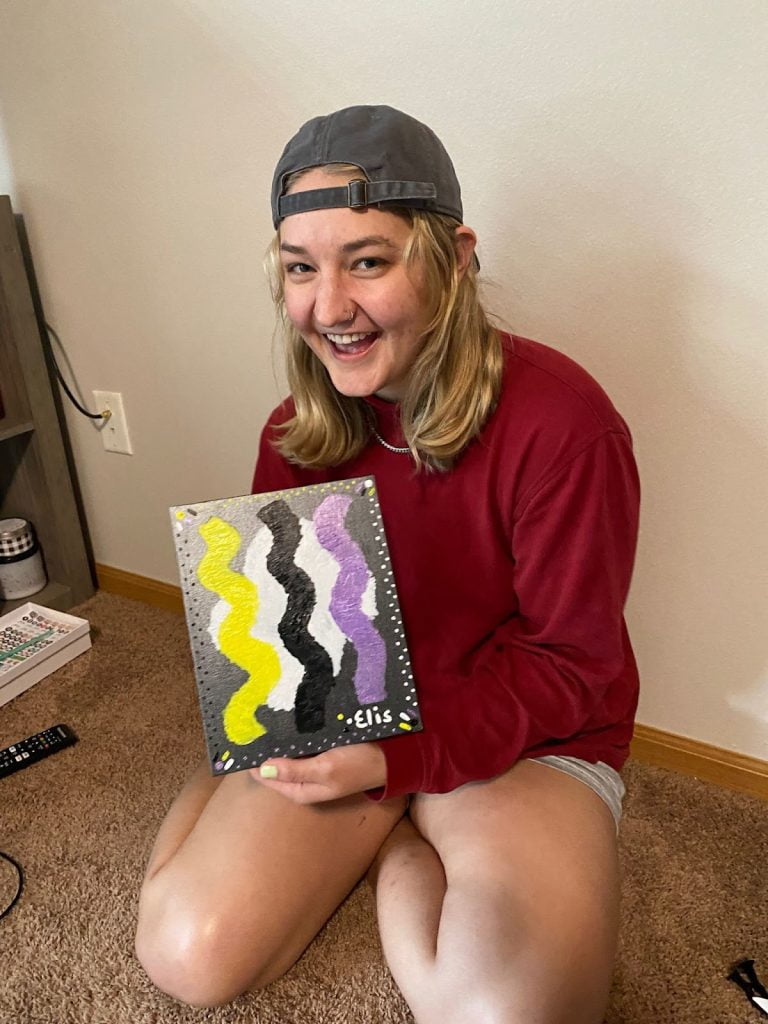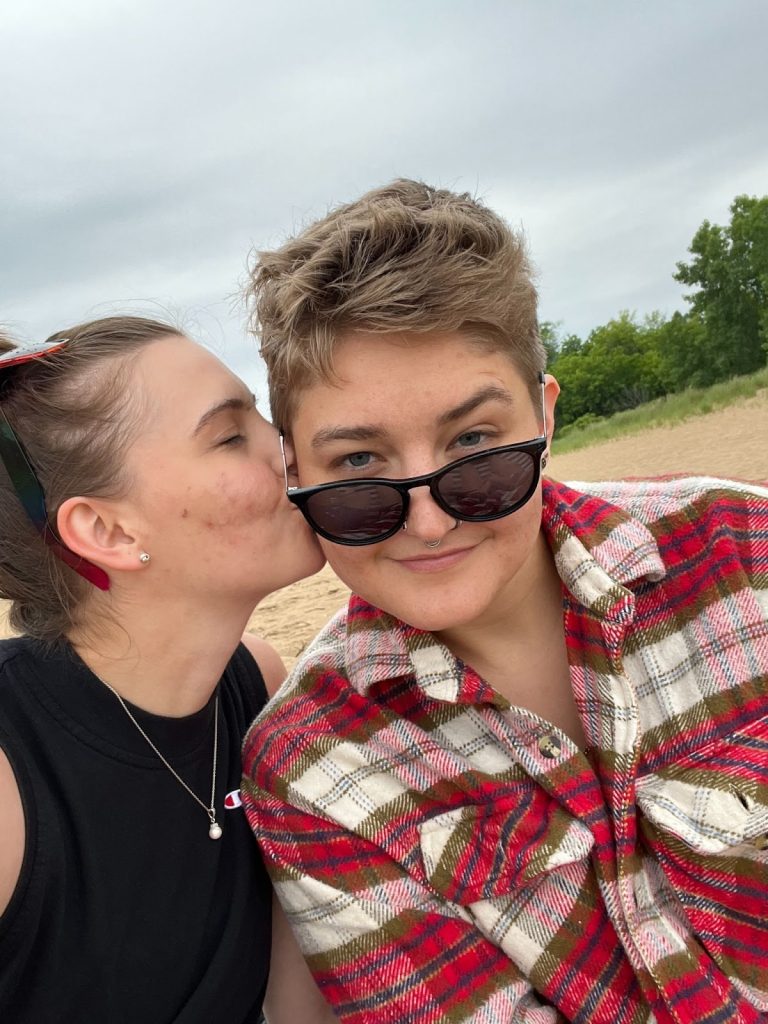Your special someone is exploring their identity! What a precious time. As folks explore their identity, they may feel excited and liberated while also feeling isolated or anxious. When it comes to your partner, it is important to both validate and celebrate their journey of being their true self. While you might not “get it” or understand right away, you can still show respect, love, and support towards them. Follow along for a few key points on how you can embrace and validate your non-binary partner’s identity.
Do your own research
As times are changing, more resources are becoming increasingly available. Now is the time to begin learning how you can validate your non-binary partner’s identity. Invite yourself on a journey of knowledge through resources available to you. Below are a few links you can start with:
- Trevor Project’s Guide to Being an Ally
- PFLAG’s Page of Non-Binary Resources
- Human Rights Campaign Trans and Non-Binary FAQ
Listen to your partner
Ask your partner if they’re open to talking about their identity. If they are, let them know you appreciate their vulnerability by sharing these parts of them with you. This kind of intentional communication can help create space for you to listen to their story.
This is a time for your partner to talk about their journey, not for you to inquire about every single question you have about their identity. They don’t owe you an explanation for everything. Questions can and will come up naturally over time. Exploring and processing may be overwhelming for your partner as they navigate their identity. Take things slowly and if that feels hard, take a deep breath and focus on patience and compassion.


If your partner declines to talk about their identity, let them know that you are a safe space to come to in the future if and when they choose to discuss it. Voice that it is okay to feel uncertainty, vulnerability, and fear through this process.
We were cooking dinner one night when Elis first came out to me as non-binary. We spoke curiously about labels, explored affirming names for Elis, and wondered about how our relationship would change. I explained that it didn’t change anything and that I love them for exactly who they are.
Through the years we have had some ups and downs with family, but many of them have come around to accept Elis for who they are, use their correct pronouns, and respect our relationship. It has been an ongoing journey for us. We wholeheartedly understand that it takes time for others to recognize and validate your non-binary partner’s identity. Hang in there!
Be patient, embrace change
Again, if your partner recently came out to you, they might be navigating a lot of things internally. Big feelings are okay! Practice patience with them. Discovering a new gender identity for yourself may be both exciting and terrifying. One day they might be feeling empowered and ready to take on the world, whereas the next day they feel scared and alone. Reassurance and patience are important parts of support within a relationship.
Embracing change comes with every relationship. Humans are meant to continuously learn, grow, and change. Change can happen in many forms for all relationships, but with a non-binary partner change might look like starting hormone replacement therapy (HRT), having a different physical appearance, or experimenting with different hobbies/interests. As their partner, embrace this. It is such a beautiful process to see your partner grow and discover themselves for exactly who they are.
Explore gender-affirming date ideas, such as:
- Find a local gay bar to joyfully support queer performers (drag, burlesque, etc.)
- Thrift with your lover for clothes or an outfit that they feel extra confident in
- Read queer novellas on a blanket at the park and talk about the characters
- Get creative with paint and pride to celebrate a name change
- Accompany them to a haircut/color appointment to hype them up!
- Hug & kiss!! Whatever you’re into! <3 Support takes many forms


USE THEIR PRONOUNS
Pronouns are sometimes referred to as “preferred” pronouns. This can be confusing language because people’s pronouns are not “preferred”. Using “preferred” invites the thought of their pronoun(s) being optional or a preference. They are not a preference. Pronouns are a way to respectfully refer to someone in conversation.
This should go without saying, but please use people’s correct pronouns. If you have been with your partner for a while and they recently came out to you as non-binary, have some grace for yourself if you accidently use the incorrect pronoun(s). If you slip up on accident, always correct the pronoun. Give a brief apology and be more mindful next time when addressing them in conversation.
My biggest tip is to recognize that this is your partner’s identity and respect it. View them as non-binary, not their past identity with a different/new pronoun. Sure, it may take a bit to get used to and you should have grace for yourself during this change in your relationship. Additionally, they deserve respect and to be themselves around you. Misgendering often occurs in public situations from deep rooted fear, such as using their pronouns in conversation and friends or family looking confused, disgusted, or uncomfortable. It is not your job to make everyone else feel comfortable, but it is your privilege to help your partner feel safe.
Be your partner’s biggest support
Some families disrespect and invalidate their non-binary/trans family members. If this has happened to your partner, we empathize with how heartbreaking it is. Your partner deserves to feel respected and valid, as you know! Your love and enthusiastic support is so valuable to your partner and your relationship.
Navigating the world with feelings of isolation and abandonment is a sad, scary, and lonely experience. Invite your partner to lean on you during this time, and stay mindful of your capacity to support them. While being your partner’s biggest support can bring you both closer, don’t be afraid to also connect with people in your community. Seek out organizations, volunteer opportunities, and/or activity groups in your community with people who may also identify as non-binary. Explore queer-owned businesses via the “Everywhere is Queer App”! This app is especially useful while traveling to find safe spaces.
Conclusion
Having a partner come out as non-binary is a learning process, an adventure, and a journey. Work together to learn how you can validate your non-binary partner and respect their personal journey. Celebrate together. Laugh, have fun, and encourage play in your relationship. Grow to understand that there will be difficult situations at times but that these situations are temporary. You can both make choices that can strengthen your relationship. Most importantly, be proud of yourselves for continuously growing and learning. We hope you have a lovely journey together!






